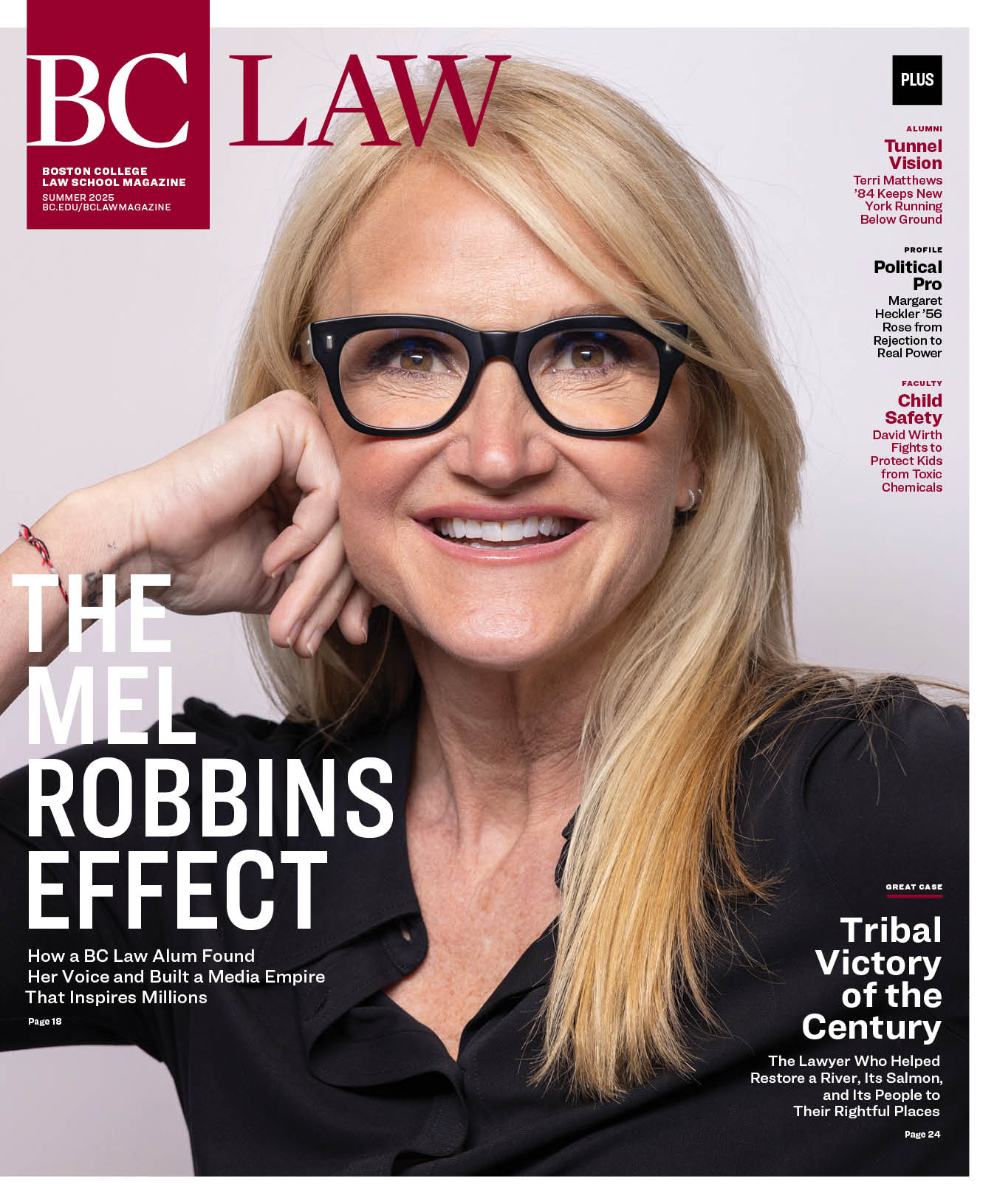Pocket Résumé
DAVID WIRTH
Degrees: AB in chemistry, summa cum laude, Princeton, 1976; AM in chemistry, Harvard, 1978; JD, Yale, 1981. Career:Technical services chemist, Orion Research, 1978; attorney, US State Department, 1983-1986; senior attorney, National Resources Defense Council, 1986-1990; law professor, Washington and Lee University, 1990-1999; professor, Boston College Law School, 1999-date. Media: Articles in Yale Law Journal, Cornell Law Review, Harvard Environmental Law Review, and numerous other publications.
The Idea: Weak government regulation of manufactured chemicals in the US has led to widespread health problems, especially in children, whose immature immune systems make them more sensitive than adults to toxins. Many dangerous chemicals currently in use would likely be banned if they were treated like drugs, which can’t reach the market until they are proven safe and effective.
The Impact: On January 16, “Manufactured Chemicals and Children’s Health—The Need for New Law,” an article co-authored by Professor David Wirth, appeared in the New England Journal of Medicine, widely considered one of the world’s top three medical journals. Big media have taken notice, with reports based on the article on WBUR, the Boston NPR station, and in the Guardian, the New York Times, and even the Daily Mail, a London tabloid.
In August, Wirth will take the findings of his article and an earlier report on human health and plastics, which he also co-authored, to Geneva, for the latest round of United Nations-sponsored multilateral talks on plastics pollution. There, his formal observer status will allow him to address negotiators from the floor. Wirth should be comfortable in the setting. As a lawyer for the US State Department in the 1980s, he negotiated the Montreal Protocol, which protects the atmospheric ozone layer, and helped prepare negotiations of three other international pacts on chemicals and the environment. Having worked as a chemist, he’s also on close terms with the chemicals and products to be considered in Geneva.
Of Wirth’s contribution to the NEJM article, co-author Professor Philip Landrigan, director of Boston College’s Program for Global Public Health and the Common Good, said, “With his varied background in chemistry, environmental and regulatory law, and international negotiations, [he] provided invaluable insights into the complex web of international regulations and UN treaties that govern chemical safety in global commerce…We could not have written [the article] without him.”
Citing peer-reviewed scientific studies, the article points to links between fetal or early life exposure to chemicals on the market today—things like brominated flame retardants, BPA (used to line food cans and in children’s toys), PFAs (used in nonstick cookware), phthalates (a component of some plastics)—and a long list of conditions, including breast cancer, reproductive disorders, thyroid disorders, immune dysfunction, childhood obesity, and elevated levels of cholesterol. Exposure to toxins can also affect intelligence. One study cited in the article found that leaded gasoline, sold for fifty-some years before it was banned during the 1970s, reduced the number of US children with IQs above 130 by more than 50 percent and increased the number with IQs under seventy, a sign of intellectual disability, by more than 50 percent, resulting in the loss of trillions of dollars in earning power.
Wirth and his co-authors propose a radically different scheme … whereby the manufacturer must prove with hard data a chemical’s safety and usefulness before it enters the market.
Why have regulators let so many dangerous chemicals become so widely disseminated? The answer can be found in federal law, specifically the Toxic Substances Control Act (1976), under which most manufactured chemicals don’t require preclearance to enter the market. Instead, “the EPA allows stuff on the market and then picks out the ones that might be dangerous,” said Wirth. Meanwhile, products like leaded paint and gasoline, chlorofluorocarbons, which caused the ozone hole, and asbestos, a deadly carcinogen, cause untold damage.
Wirth and his co-authors propose a radically different scheme—one recently adopted in a first step by the European Union—whereby the manufacturer must prove with hard data a chemical’s safety and usefulness before it enters the market. Once on the market, chemicals periodically face a safety review, for which the manufacturer must supply updated data. This puts the burden of proving safety on the manufacturer—where it belongs, according to Wirth.
Wirth also champions a parallel process, more modest but still helpful, that identifies suspect chemicals and reduces their use as far as possible, in part by finding safer substitutes. Such a process, which relieves regulators of the burden of proving toxicity to what he calls “a legal standard,” is underway in Massachusetts, under the state’s Toxics Use Reduction Act (1989, amended in 2006).
As he prepares to head off to Geneva, Wirth waxes realistic about the chances for a breakthrough in negotiations, given the new Trump administration’s vast appetite for deregulation. “Exactly what the US is going to say is not clear now,” he said, “but that makes it especially important for US citizens to be there…to report and to offer constructive feedback.”
See related information graphic here.




